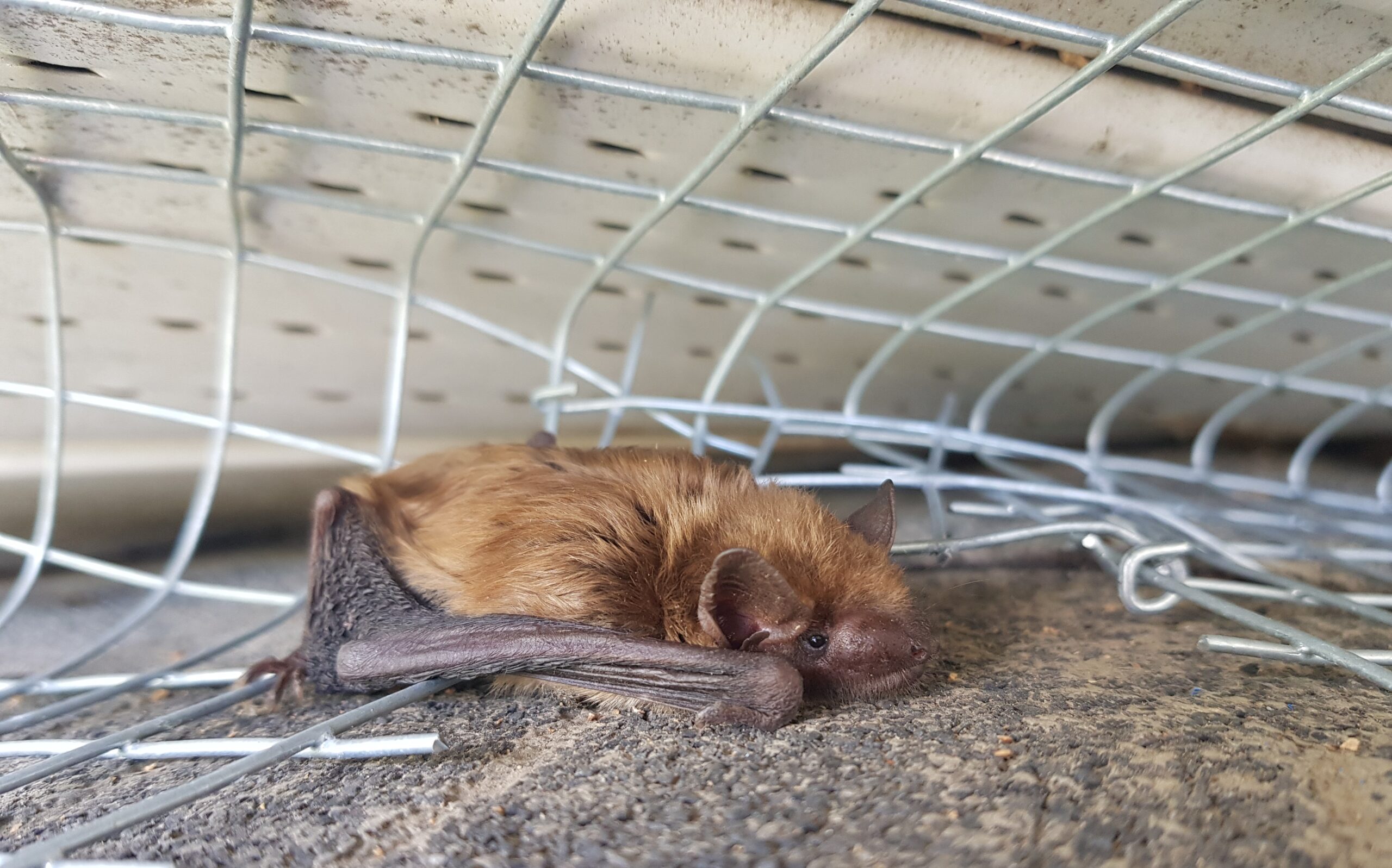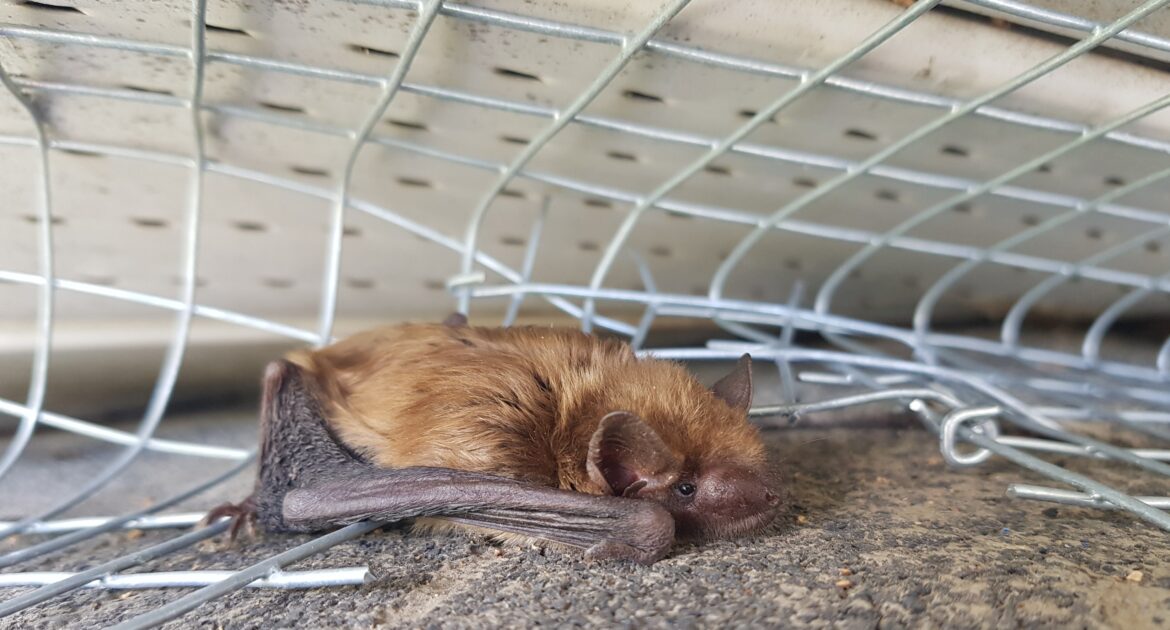Delving into a captivating enigma, you’ll find yourself in Milwaukee, Wisconsin, the beating heart of Midwestern wildlife. We’re going to unravel a characteristic behavior that has puzzled many – a certain species of winged creatures taking an ‘inverted’ approach to rest. A simple question beckons – why indeed, do our nocturnal friends choose to dangle rather than perch in the conventional sense?
Unraveling this peculiarity about bats doesn’t only satisfy our curiosity. It provides valuable insights, especially for homeowners, into better managing their interactions with the wildlife in their surroundings.
The focus goes beyond just the peculiar tendencies of bats though. With careful insights, we can step into their world, learn a myriad of interesting tidbits, recognize the tell-tale signs of their unwelcome invasion into our abodes, and acquire knowledge about their preferred entry and exit points. Plus, there’s a serious discussion on how a professional touch can make a difference in handling these and other wildlife-related concerns, including the common issue of bat intrusion.
Guided by our expert team of local wildlife removal technicians, let’s embrace the unique world of bats, equipping ourselves with the knowledge that can enhance our harmony with the local ecosystem. Whoever said learning about wildlife was dull obviously never hung upside down with the bats!
What are the Scientific Reasons Behind Bats Hanging Upside Down?
Our curious focus on a unique behavior of these winged creatures might leave you pondering, “why do bats hang upside down?” The mystery stems from various scientific reasons, all wrapped around their natural survival instincts and unique physical attributes. Here’s the scoop on these fascinating facts:
- The bat’s lightweight body and sturdy wings enable them to rest upside-down effortlessly, eliminating the need to exert energy holding onto their roost.
- They lack the strength to take off from a still position on the ground due to their wing structure and size, so hanging gives them a perfect launch pad for flight with just a little drop.
- Resting in this unique position enables them to evade predators during the day by opting for elevated and secluded spots, ensuring added safety.
- Typically living in large groups, their inverted roost provides the perfect climate control, moderating body temperature amidst hundreds or thousands of peers.
Thus, hanging upside down serves more than just an eye-catching spectacle – it’s an ingenious adaptation for survival shaped by nature’s hand. It’s integral to their lifestyle, debunking the enigma surrounding this peculiar behavior. The fascinating world of these creatures, alongside other local wildlife, certainly holds more mysteries for us to unravel.
What are Some Fascinating Facts About Bats You Might Not Know?
Ever wonder what makes these upside-down dwellers tick? Let’s discover the world of these intriguing creatures together. Here are a few dazzlers that might come as a surprise:
- Superior Sleepers: Flipped sleep schedules aren’t the only oddities about these creatures’ slumber habits. They’re known to sleep up to 20 hours a day, a nice trivia nugget for the next time you debate the phrase “sleep like a baby.”
- Nocturnal Navigators: Going out when the sun goes down is their way of life. They navigate through the dark using echolocation – bouncing sound waves off nearby objects to map out their surroundings.
- Hunger Experts: Imagine having a fast food joint in your backyard. They don’t have to. Bats can consume over 1,000 insects in an hour, acting as natural pest management.
- Fruitful Fliers: Fruit bats, on the other hand, are crucial to forestry, helping in the pollination process and dispersing seeds in the places they roost.
What a revelation! These small critters have so many interesting quirks to boast about. In your journey to becoming a local wildlife connoisseur, remember that while intriguing, they can sometimes stray into our homes. Keep this newfound knowledge handy, and you’ll always be one step ahead!
What are the Common Signs of a Bat Infestation in Your Home?
Surveying your abode for uninvited guests requires keen observation skills. When it comes to winged nocturnal creatures, such as bats, specific signs are quite revealing. Here are few unmistakable signals that might hint towards a possible infestation:
- Noises at Night: Oftentimes, these creatures are most active during nighttime. Unusual sounds like squeaking or scratching, especially in the dark could indicate their intrusion.
- Guano Accumulation: Encountering piles of bat droppings, also known as guano, is a strong evidence of their presence. Caution: Guano could harbor deadly fungi, thus it’s essential to avoid direct contact.
- Stains and Smears: Finding greasy stains on walls and ceilings resulting from the bats’ body oil can be another sign. Additionally, an unpleasant odor might accompany this oil.
- Entry Points: Examine your domicile’s exteriors for small openings that could act as potential entry points. Remember, bats can sneak in through the tiniest of gaps!
Being aware of these signs contributes significantly to local wildlife removal efforts. Ensuring a bat-free vicinity not only promises peace of mind but also reinstates the fact that you are playing your part in maintaining the delicately balanced local ecosystem. Remember, your home is your fortress. Keep it secure, keep it bat-free.
Typical Ways Bats Can Enter Your Home?
Understanding how bats can find their way into your home is crucial for preventing unwanted guests of the winged variety. These nocturnal creatures are surprisingly agile and resourceful, often finding their way through barriers that seem impenetrable to the unsuspecting homeowner. Identifying their potential entry points is the first step toward effective wildlife control and maintaining a bat-free abode.
The attic is a prime target for bats in search of a new home, offering dark, undisturbed spaces ideal for roosting. Similarly, gable vents on the exterior of houses can provide an easy entry for bats, exploiting any weakness or gap to gain access. Natural habitats like hollowed-out trees and dense bushes close to your home can also serve as launchpads for these animals to infiltrate your living space, especially if branches directly overhang your house.
Uncovered or uncapped chimneys present yet another inviting entrance for bats, while even the smallest cracks and crevices in siding, roofing, or the foundation can be just wide enough for them to squeeze through. Armed with the knowledge of these common entryways, you can take proactive measures to secure your home against bat invasions.
This awareness not only helps in the timely identification and humane removal of bats but also reinforces the importance of prevention, safeguarding your home against potential infestations and upholding the principle that prevention is indeed better than cure.
Steps a Wildlife Technician Would Take to Remove Bats Safely
Noting an unusual accumulation of guano or hearing faint squeaks may suggest we are contending with the intriguing enigma of bat presence in our home. But how do our wildlife technicians approach the issue of safely escorting these flying mammal residents back to the wild? That certainly is an intriguing query we commonly find among homeowners in Madison, Wisconsin. Let’s walk you through this process:
- Inspection: Initially, our team starts by conducting a thorough inspection of your home to identify the bat’s dwelling place and the total degrees of infestation. This assists in formulating an effective exit strategy.
- Exclusion: Moving forward, the next step includes installing a one-way exit device at entry points that permits the nocturnal visitors to depart, concurrently preventing their re-entry.
- Sealing: Once confirmed that the uninvited guests have vacated, we proceed to seal all potential access points, effectively thwarting any chances of a recurrent nocturnal visit.
- Sanitization: The final process involves sanitizing the affected areas to remove any trace left by the bats, including guano, ensuring your residence remains clean and safe post the intervention.
Although the mystery of why our flying mammal friends choose to hang upside down remains enthralling, their unsolicited presence in your home certainly is not. Always call a professional for safe bat eviction like us, avoiding any risk to you or these fascinating creatures. By understanding these steps, you now apprehend the meticulous effort involved in the seemingly simple phrase – “local wildlife removal.”
Benefits of Hiring a Professional Wildlife Technician for Bat Removal and Protection
Enlisting the assistance of a professional in the realm of wildlife management can be a homeowner’s best defense against unwanted visitors. When it comes to dealing with creatures such as bats, here are several advantages to employing a trained technician:
- Safe and Humane Handling: Trained technicians understand the nuances of dealing with bats without causing harm or distress to themselves or the animals.
- Thorough Home Inspection: They have the knowledge required to scrutinize your premises and identify potential entry points effectively.
- Effective Bat Removal: Technicians employ proven bat removal strategies to ensure these nocturnal inhabitants are safely removed from your property.
- Preventive Measures: Once all bats are effectively removed, our team will recommend and implement preventive measures to keep these winged creatures from returning.
- Guidance and Education: In addition to the physical remedies, having a professional handle the problem means you’ll receive expert advice on bat behavior, knowledge which is instrumental in preventing future infestations. This demystifies many misconceptions about these night creatures.
Overall, professionals in wildlife management like us bring an array of skills to ensure the efficient and safe eviction of bats from your home. Remember, effective and humane control is the keyword in dealing with these valuable animals who merely see your home as a potential roost. So, in your time of need, consider reaching local professionals to safeguard your home and our wildlife.
The Right Solution for Your Wildlife Control and Protection Needs
When it comes to the curious case of why bats go for the upside-down position or dealing with an unexpected intrusion of these creatures into your peaceful abode, the situation calls for experienced professionals – and that’s exactly where we come in. At Skedaddle Humane Wildlife Control, we offer comprehensive services, from providing fascinating insights into the world of bats to handling local wildlife removal.
Unraveling the baffling behaviors of these unique creatures or addressing their uninvited visits should be left to the experts to ensure humane control and successful resolution. Not just bats, we are also adept at providing superior bat protection, proving ourselves as your one-stop solution for all wildlife control needs.
So, why wait to resolve the bat mystery troubling your home? Contact us today and request a quote to learn more about how Skedaddle Humane Wildlife Control services in Milwaukee can help you reclaim your space. There’s no time like the present to ensure your home is protected!




